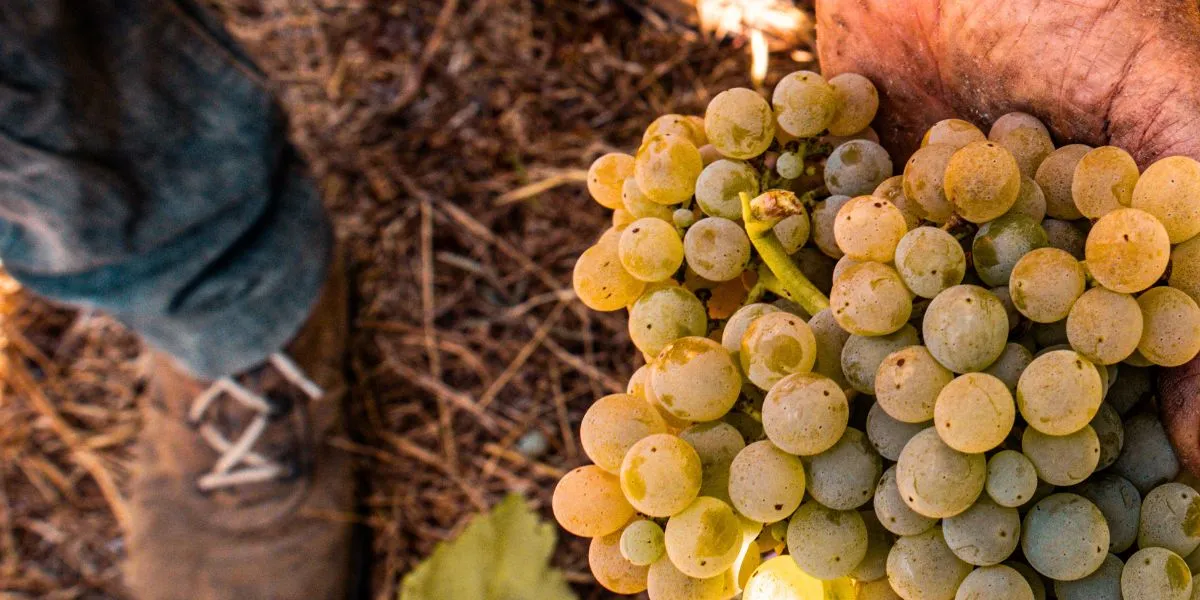Quinta da Alameda in the Vigneron Initiative: Questions and Answers

The figure of the Vigneron embodies complete dedication to the vineyard and the wine it yields. This approach protects authenticity and strengthens the intimate bond between terroir, wine and the underlying philosophy that guides every decision from vine to cellar.
What Does It Mean to Be a Vigneron?
To be a Vigneron is to work exclusively with one’s own grapes and to vinify them using only one’s own facilities and resources, without shortcuts or external help. This model excludes buying grapes from others and forbids the use of the estate’s winery by third parties. Each wine becomes a direct expression of the winemaker’s philosophy and of the vineyard that receives their care throughout the year.
Is There an Equivalent to the French Vigneron in Portugal?
Yes. Portugal recognises the vitivinicultor-engarrafador. This status requires the producer to vinify only their own grapes and to be registered with the Instituto da Vinha e do Vinho.
What Advantages Come With This Status?
The greatest advantage is full control over the origin, quality and character of the grapes. Each wine reflects the subtleties of individual parcels and the decisions taken both in the vineyard and the winery. This approach safeguards identity and rejects external sources of fruit.
What Burdens Fall on Those Who Work Only With Their Own Grapes?
A Vigneron faces substantial costs because they rely entirely on their own resources and on the health and balance of their vineyard. Investment covers skilled labour, a fully equipped winery and demanding agricultural management. Climatic risk also weighs heavily: if a poor harvest occurs, the Vigneron cannot compensate by purchasing grapes elsewhere. At the same time, choices in the cellar require absolute precision and a strong command of oenology. This path offers complete authenticity, but it also imposes rigorous technical, operational and financial discipline.
What Are the Benefits for Consumers?
Consumers gain access to wines that express terroir with clarity, identity and transparency. Each bottle provides a faithful sensory interpretation of place. The French example also shows that Vignerons tend to preserve soil health and local ecosystems with knowledge and care.
Does Being a Vigneron Mean Being a Small Producer?
Not at all. Size does not define a Vigneron. One may farm two hectares or two hundred. Scale is irrelevant. What matters is that every wine comes solely from the producer’s own grapes and their own winery.
How Did the Vigneron Initiative Emerge in Portugal?
The initiative began with a movement led by Quinta das Bágeiras in Bairrada. It brought together vitivinicultores-engarrafadores from various regions who share the same rigour and commitment, including Quinta da Alameda. Their meeting reinforced a desire for continuity and opened the door to a national movement.
Can Other Producers Join the Initiative?
At present, no. The group consists of ten producers who share a common vision and well-established practices. There is a dedicated association for those seeking a formal framework, but the core group is currently closed by collective decision.
What Events Are Planned by the Initiative?
Further presentations for trade professionals are already planned. The aim is to demonstrate the strength and distinctiveness of Vigneron wines. The group intends to hold an annual event on a rotating basis across the different estates, and encourages joint participation in fairs as well as the promotion of the Vigneron philosophy through the members’ own brands.
